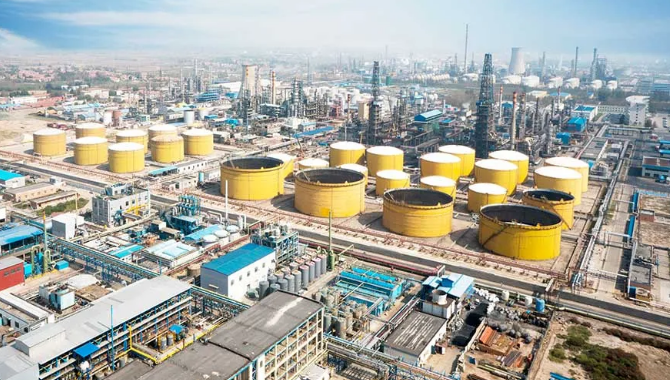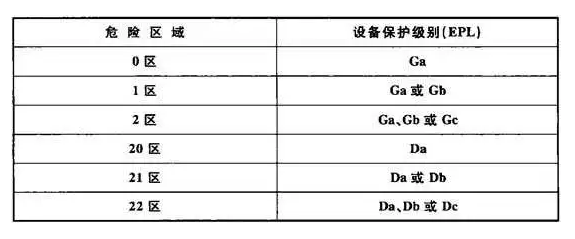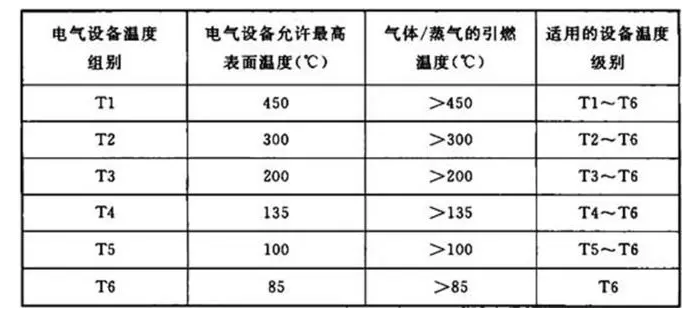
在化工、石油等行业的许多企业中, 由于生产、贮存和运输等各个环节里 ,从原料、中间产品到成品, 大多数都具有易燃 、易爆的特点, 再加上化工工艺流程复杂多变 ,高温 、高湿、高压、深冷,所以存在或可能存在正常情况下或事故状态下,可燃液体 、蒸汽 、气体的溢出。

当这些可燃性介质与空气成一定浓度混合时 ,即形成了爆炸性混合物,而爆炸性混合物所占的空间就成为不同程度的爆炸性危险环境。下面由我们简述下爆炸性气体环境危险区域的划分及电气设备的选择要求。
1、确认该防爆区域的分区
(1)不同释放的类型及释放时长对应不同的等级,爆炸性气体对应0区,1区和2区,而爆炸性粉尘则对应20区,21区和22区。
(2)不同的等级对应不同的电气设备保护等级(EPL),以爆炸性气体为例:一般情况,爆炸气体环境以2区为主,同时含有少量1区,1区主要为2区范围的地,或者一些特殊释放源的要求(比如槽车密闭式注送口15m内为1区)。
(3)对应爆炸气体环境0区,电气设备的设备保护等级为Ga,爆炸气体环境1区则为Ga,Gb,爆炸气体环境2区则为Ga,Gb,Gc,综合考虑,设备保护等级可选择Gb,爆炸性粉尘环境与之同理,设备保护等级可选择Db。
具体爆炸性环境内电气设备保护级别的选择见表1:

2、根据不同设备保护等级,选择不同电气设备的防爆结构
一般电气防爆结构有以下几种:
(1)隔爆型:可以承受可燃性物质进入外壳或规定故障时产生的火花不能点可燃性气体或粉尘;
(2)增安型:对正常工作情况不产生电弧和火花的电气设备采取措施用来防止内外产生危险因素;
(3)正压型:保持设备内部气压高于外部从而达到安全的电气设备。
常用的电气设备:比如配电箱,灯具,电机可采隔爆型;防爆接线盒,穿线盒可以采用增安型。
3、根据爆炸性气体或粉尘的具体成分确定该爆炸性气体或粉尘混合物的级别组别
每种爆炸性气体均可根据大试验安全间隙或小点燃电流比来进行分级(见表2),按引燃温度进行分组(见表3),而对于爆炸性粉尘,则不再划分级别和组别,而是对爆炸性粉尘分级并标注设备的高表面温度。
表2爆炸性气体混合物分级

表3引燃温度分组

当存在多种可燃性物质混合时,要按照混合之后的爆炸性混合物的级别和组别选型,当没有资料可查且不可以通过试验确定时,可定为较高等级的级别和组别。
当该防爆区域同时存在爆炸性气体和粉尘,则应同时满足两者要求。当涉及无资料可查且不可以通过试验确定的可燃性气体或粉尘时,可参考同化学结构的其他炸性气体或粉尘。